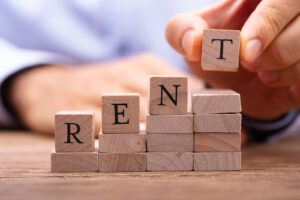The CRA’s ‘Statement of Real Estate Rentals’ (Form T776) is recommended to be completed for each Canadian rental property you own and attached with your annual personal tax filing. Simply follow these 5 easy steps or ensure your bookkeeper or tax accountant have all the necessary details to so on your behalf.
Step 1: Identification & Period Covered
Enter your name and social insurance number at the top of the form.
Here you will also enter the investment period. For example, set the start date to January 1st if you owned the property before this taxation year, and the end date, December 31 if you still own the property at the end of the tax year. If you acquired the property during the tax year simply enter the official purchase date you took ownership. If this is the case, there are special half-year rules that will apply to you.
Step 2: Ownership
This is an important step as you detail any co-owners or partners and will affect tax reported on your personal taxes. Assuming you are the sole owner you would simply enter 100%. However, if there are other owners in addition to yourself, enter their details and % they share ownership and any gains or losses in the property for tax purposes.
Step 3: Property Identification & Gross Rental Income
This section of Form T776 allows you to record the property address and establish if there is just 1 ‘rental unit’ within your address such as a condo you rent. Or possibly you have a house that has an upstairs and downstairs renter which constitute ‘2 rental units’. If you are more established investor, you might own an apartment with 26 renters or ‘units’. Whatever level of investor you are, capture all rent payments you collected from renters to establish your Gross Rental Income.
Step 4: Net Rental Income before CCA
To complete this section you need to first understand if an expense in question is a ‘Current’ expense or ‘Capital’ expense. Current expenses, provide short term benefits such as general maintenance, and can be deducted from your rental income. Capital expenses, provide a long term benefits for your property such as a bathroom renovations. These expenses are added to the ACB of your property to reduce future Capital Gains. Page 14 of this CRA Explanation Document provides a useful chart to help you determine which they are.
List of Expenses: Collect your receipts and enter all the ‘Current’ expenses incurred in the tax year. These would include common deductions such as:
- Advertising – you may also deduct finders’ and referral fees that secure tenants
- Insurance – remember to only deduct the portion of the coverage that applies to the tax year.
- Interest and bank fees – any Mortgage or Line of Credit interest linked to your property and simple account fees that support your investment
- Office expenses – all consumables used directly to support your investment, do not include ‘capital’ expenditures such as calculators, filing, chairs or a desk.
- Professional fees – not only can you deduct cost of Accountants and Bookkeepers to manage your books and prepare your taxes, you can also deduct all legal and related fees to create leases and collect rents. Reminder, legal fees when buying are selling are considered Capital expenses.
- Management and administration fees – this would include all payments to property management companies or other agents employed to help secure and manage tenants.
- Maintenance – this includes all preventative and repair costs incurred in the upkeep of your property. With one exception, you cannot claim your own labour, so you may as well hire out and keep your time for personal pursuits.
- Salaries and Benefits – don’t forget to include any employer contribution portions
- Property Taxes
- Travel expenses – all reasonable expenses to get you to the property to oversee repairs or collect rents are deductible. Lodging overnight is not, neither would be flights if your property is in another province. It is not ‘reasonable’ to expect you to collect rent personally.
- Utilities – any utilities required to maintain property that tenant is not contracted to pay
- Motor Vehicle expenses – If your property is in the general area you live and do all the repairs yourself, or need to transport tools to the location, you may deduct this portion of your vehicle expenses, if you track all business and personal expenses. Make sure you do not consider mileage for collection of rent nor can you include any CCA deductions for this personal vehicle.
- Other allowable expenses – Landscaping fees, condo fees and lease cancellation are the most common.
It is also important to remember that in addition to your own labour, you cannot claim Land Transfer Costs, Mortgage principal payments nor any penalties on your notice of assessment.





